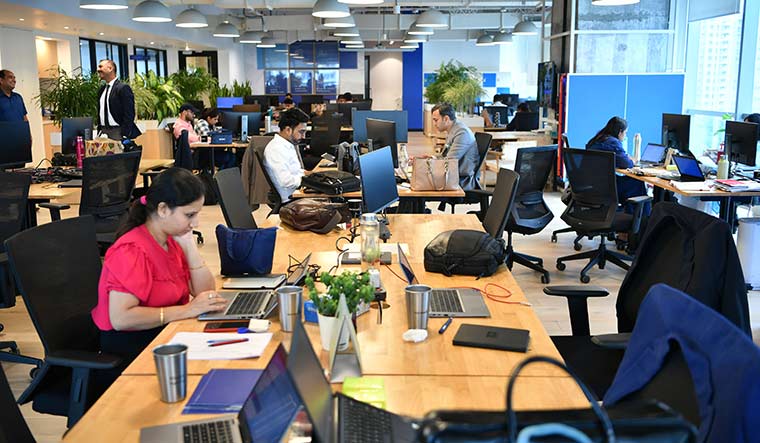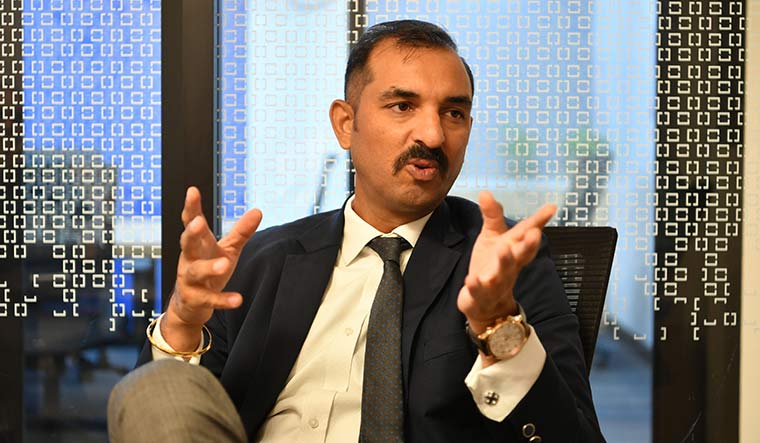Medha Deb Roy had just landed her first job when her father fell seriously ill in 2016. The world was not yet familiar with the term WFH, but she requested her employer to let her work from home so that she could care for him. “Luckily, the MNC I was working with was understanding, and did create the environment for me. My clients did not even realise I was working remotely,” she said.
However, reality hit when she moved to an Indian company, which refused her request. “I sensed a lack of trust,” she said. “It is also a sense of control, I guess, as a boss does not know what the junior is up to while working in a completely remote environment.”
When the Covid-19 pandemic and the lockdown gobsmacked the world in the summer of 2020, it brought with it some dramatic new ways of living. WFH suddenly became the de facto standard, with office workers of the world meeting on video conferencing apps like Zoom and children attending virtual classrooms. E-commerce sites and food delivery aggregators replaced shopping and eating out, while OTT platforms became the go-to modes of entertainment.
Two years down the line, however, as the world moves slowly back to normalcy, the poster boys of the ‘new normal’ are facing their big reality check. Across the spectrum, the big push is to get things back to the physical, to ‘how it used to be’.
Rather surprising, considering the predictions that were made about the tectonic shift in the ways in which we will live, work and play. So what exactly did change?
“People tend to underestimate the impact of change in the long run, and overestimate the impact of change in the short run,” said Raman Kumar Singh, India CHRO of the multinational technology giant ABB. “I think a lot of companies went ahead of the change, moving to the WFH model completely. While that must have been the need of the hour, that’s where they overestimated how things will change in the short period.”
Take for instance, the edtech sector. With schools shut, the likes of Byju’s and Vedantu were touted as the future. Raghav Gupta, MD (India & Pacific) of the global edtech firm Coursera predicted then: “A significant part of learning will move online (and) transform the education system…forever.” Some Rs37,000 crore of funding flowed into the sector during this period; a lion’s chunk to the market leader Byju’s alone, which went on an expansion spree snapping up other companies. It became the second most valuable startup in the country, after Flipkart.
Then reality hit. As schools reopened and the funds from investors abroad dried up, edtech companies started facing choppy waters. The government took note of the numerous customer complaints against Byju’s. Vedantu has been buffeted by allegations of kickbacks. Some 10,000 employees have been laid off in the sector by the likes of Unacademy, Lido Learning, Toppr and WhiteHat Jr (the last two are subsidiaries of Byju’s).
The biggest irony, however, has been that after advocating for virtual learning model all the while, some of these companies have opened physical coaching centres. Byju’s is aiming for 500 such centres across the country. “You either die trying, or live long enough to become the very thing you went out to disrupt,” sniped startup professional Manan Agarwal on Twitter.
The wheel has turned full circle not just for the edtech sector—almost all areas that saw a boom during the lockdown are seeing the flip side now. The International Monetary Fund and Harvard Business School tracked Mastercard usage in 47 countries from 2018 to 2021 and found that while online shopping rose sharply when the lockdowns hit, it fell soon after. The share of e-commerce spending, though higher than pre-pandemic level, is just 0.6 per cent above the regular growth trend.
“One common narrative is that the pandemic accelerated digitalisation, forcing consumers to learn how to shop online, and that this learning was here to stay,” the IMF researchers noted. “While our results support the quick uptake of e-commerce, the persistence does not appear broad-based.”
The Swiggys and the Zomatos that urban India turned to make up for its lack of dining out options are facing the same crunch as Byju’s. With profits nowhere in sight and user growth slowing down, both have tried diversification into grocery and 10-minute deliveries.
Netflix, after being the unofficial entertainment partner to the pandemic, is now facing desertions owing to the return of pre-pandemic schedules and persistent global inflation. As subscribers have started thinking twice before renewing their subscriptions, it lost 10 lakh users in the April-June period and its share dropped 60 per cent in the first six months of the year.
It is a falling sensation the fellow pandemic poster boy Zoom is pretty familiar with. The app that the whole world turned to for meetings during the lockdown days has had its shares drop 41.3 per cent so far this year. It had grown a whopping 173 per cent during the two years of Covid-19.
While big companies seeing a correction is one thing, even more surprising has been the veering off course of the WFH bandwagon. The return to office has been near-complete across the Indian workplace. “In a typical Indian company, there is nothing called WFH pretty much anymore,” said Rishi Das, CEO and cofounder of the co-working space IndiQube. “The fact is that everybody is now expected to be back in office.”
It is quite a contrast to the initial months of the pandemic, when even biggies like Google predicted the death of the office as it was. Tata Consultancy Services announced plans to keep at least 75 per cent of its employees working remotely and its CEO, Rajesh Gopinathan, said it was their new operating model that represented “the future of work”. TCS is now talking of the reverse and is aiming to get at least 80 per cent of its six lakh staff back at office. The likes of Google and Microsoft are all snapping up more office space across Indian cities. Traffic data shows that workplace visits are now 21 per cent above what it was before the lockdown in March 2020.
What changed? “The main reason companies wanted people to come back is to control attrition,” said Rishi Das. As corporate India moved past the initial uncertainty over Covid and the opportunities of a brave new post-pandemic world became clear, so did career prospects. Many switched to better jobs with better pay as companies sensed future opportunities and started hiring big time. As a result attrition levels shot up to worrisome levels. TCS, for instance, had an attrition level of about 20 per cent in the last quarter, which is about one lakh employees leaving the organisation in just three months!
This, coupled with a ‘screen’ fatigue after about two years of working ‘distantly’, the worries over training new recruits and the concern over the trend of ‘moonlighting’ (many professionals working from home had taken up additional gigs), set alarm bells ringing and finally seem to have ended the ‘work-from-anywhere’ dream.
But the biggest factor is something abstract—forming a connection. “Many companies have come to the realisation that when it comes to engagement and retention, the fundamentals of employee connect still haven’t changed. You need to work with people, get to know them and care for them. A transactional relationship doesn’t have tenure,” said Jeevant Kumar, senior director and head of HR at Lam Research, a Fortune 500 semiconductor equipment company. “No water cooler moment (meant) our attrition was higher last year; it is harder to build connections while working remotely.”
“You don’t get the ‘persona’ on a Microsoft Teams call!” said Bhupindra Singh, managing director (north India) of Colliers, a multinational investment management company. “Personality is a very important factor in product, manufacturing and services industries.”
There was a feeling that while productivity did go up in the initial phase of the lockdown, too much of ‘screen time’, with professionals glued to their computer during working hours and to television and mobile phone after that, was leading to a fatigue. “It just became too much,” said Singh. “Market changes need deliberation, strategy and thinking. That is not possible through technology mediums alone.”
Training of new employees was another pesky lacuna. “Most companies have grown 50 to 100 per cent. When you hire such a large number of people, normally freshers through campus placements, you have to train them. And that is not possible remotely,” said Das.
However, the pandemic has definitely left its imprint of change, the biggest being hybrid working. A majority of Indian workplaces now have employees working between home and office. “A hybrid model has options and choices—it’s not a policy, but we are creating a framework. As long as the final service and product is delivered to the customer, we are allowing that choice to the employee and the manager as a unit,” said Singh of ABB.
With attrition levels still high, companies are treading carefully, being very flexible in timings, setting up branch offices and re-designing offices to offer perks. “Employees are now expecting everything—they want gyms, food courts, game areas,” said Das. “I have had even conservative Marwari business owners coming to me asking for office redesign to incorporate these new requirements.”
The office may have made a comeback, but in its post-Covid new avatar, it is no longer central to the scheme of things. “We go to work only when there is a client meeting or training,” said Eldho Skariah, a software architect with CSG International in Bengaluru, which offers flexi options to its employees. “Unless there are meetings, I go to the office just once in a week. The actual work is all done while at home. The hybrid model is ideal as it helps us work creatively, as well as manage things on the personal front, too.”





